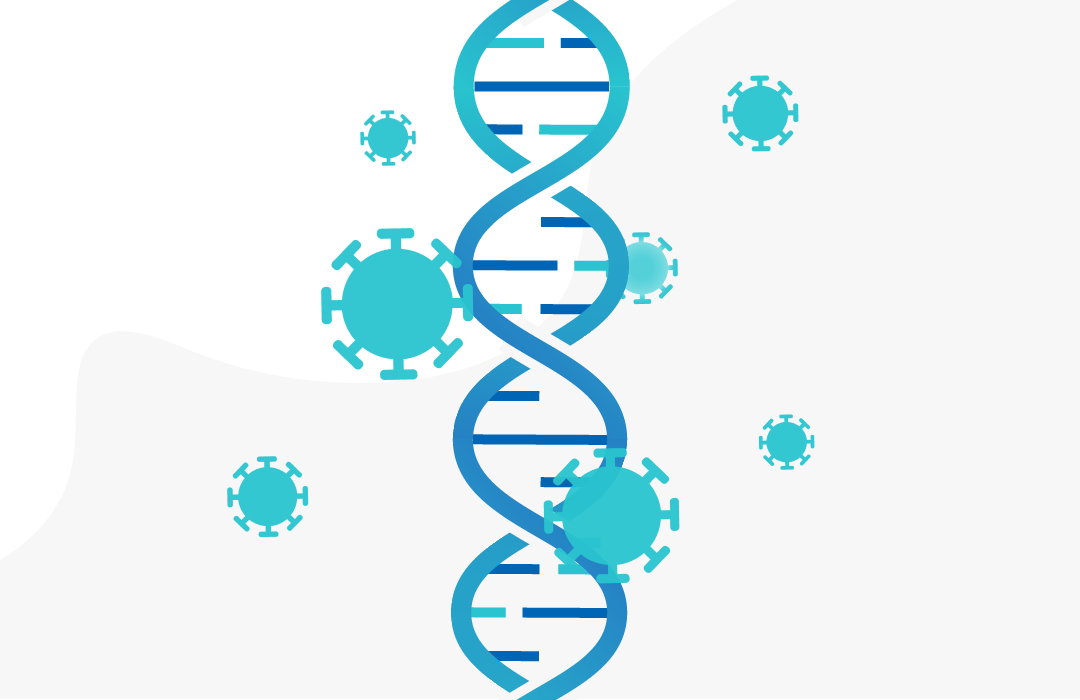%20(1).png)
Which tests are available for detecting COVID-19 and how do they work?
April 19, 2021

This article has not been updated recently
There are now several different types of COVID-19 tests available in the UK: Swab PCR testing, Lateral flow testing, and LAMP/LamPORE testing.We explain the differences in how they work, where you can get them and how accurate they are.
Swab PCR testing
What is PCR testing?
PCR tests identify the presence of the SARS-CoV-2 virus, which causes COVID-19, in your body.
How does PCR testing work?
A swab is used to rub the inside of your mouth and nose, which is then put in a tube and sent to a laboratory for testing. Once it arrives, the scientists use a technique called the polymerase chain reaction (PCR) to amplify all the genetic material in your sample. Then they add probes that bind to the SARS-CoV-2 genetic code, showing any coronavirus in your sample. Results take 1-3 days after testing.
Where can you get a PCR test?
If you have one of the three classic COVID symptoms (fever, cough, or loss of smell) you can book a PCR test on the government website. If you have any of the other 20 or more symptoms associated with COVID-19 and log them in the ZOE COVID Study app, we’ll invite you to book a PCR test.
How accurate is PCR testing?
PCR tests detect around 97-99% of positive cases when taken within the first week of symptoms appearing.
Lateral flow or rapid antigen testing
What is a lateral flow test?
Also known as rapid antigen testing, lateral flow tests are quick tests that you can do yourself. The tests look for specific molecules (antigens) found on the surface of the virus that causes COVID-19.
How do lateral flow tests work?
When you take a lateral flow test, you swab the inside of your nose and mouth, but instead of sending your swab off to a laboratory, you put the end of the swab in a small pot of liquid. Then you put a few drops of the liquid onto a testing device. The solution creates a reaction in the testing device. If the test is positive you will see two lines and negative just one line, a bit like a pregnancy test. You should get a result in about 30 minutes.
Where can I get a lateral flow test?
Lateral flow tests are available at workplaces, schools, and rapid test centres around the country, and recently became available from selected pharmacies in England as part of a government scheme to increase self-testing.
How accurate is lateral flow testing?
Lateral flow tests are much less accurate than the PCR tests, particularly when done by members of the public without medical training. Lateral flow tests are around 58 to 79% accurate, which is why they’re only used for mass testing people without symptoms to get a general indication of infections in a population.
If you have symptoms that could be COVID-19, you should get a PCR test and not rely on the results of a lateral flow test. It’s also best to confirm any positive lateral flow test result with a PCR test.
LAMP and LamPORE testing
What is LAMP testing?
The LAMP and LamPORE tests look for COVD-19 genetic material in your saliva.
How do LAMP tests work?
LAMP tests are similar to PCR tests, but they use another method to amplify the genetic material in your sample called real-time loop-mediated amplification (LAMP), which is faster and cheaper than PCR and does not require a laboratory. LamPORE tests combine LAMP with rapid, portable DNA sequencing to detect COVID-19 genetic material.
Where can I get a LAMP test?
The NHS is trialling LamPORE tests in mobile units and other locations across the country.
How accurate is LAMP testing?
LAMP testing has a sensitivity of 79%, but the LamPORE test is up to 99.57%, making it extremely accurate at diagnosing positive COVID cases. You don’t need to get a PCR test to confirm a positive result from a LAMP or LamPORE test.
What about antibody testing?
Antibody tests look for antibodies in your blood against SAR-CoV-2, which have been produced by your immune system in response to the virus. A positive antibody test result means that it’s highly likely you’ve previously had COVID-19, but can’t tell if you’re currently infected.
If you’re feeling newly unwell, get a test
COVID tests are now widely available, so getting tested is the safest option if you have any new symptoms.
Our research has shown that there are 20+ symptoms associated with COVID. If you’re newly unwell, it could be COVID-19 and you should get a test, even if you do not have any of the classic symptoms of fever, loss of smell or cough.
Download the ZOE COVID Study app and log your symptoms to be offered a test through the app.
Stay safe and keep logging.












.png)


.jpg)














.png)







%202.png)
.png)


















.png)






